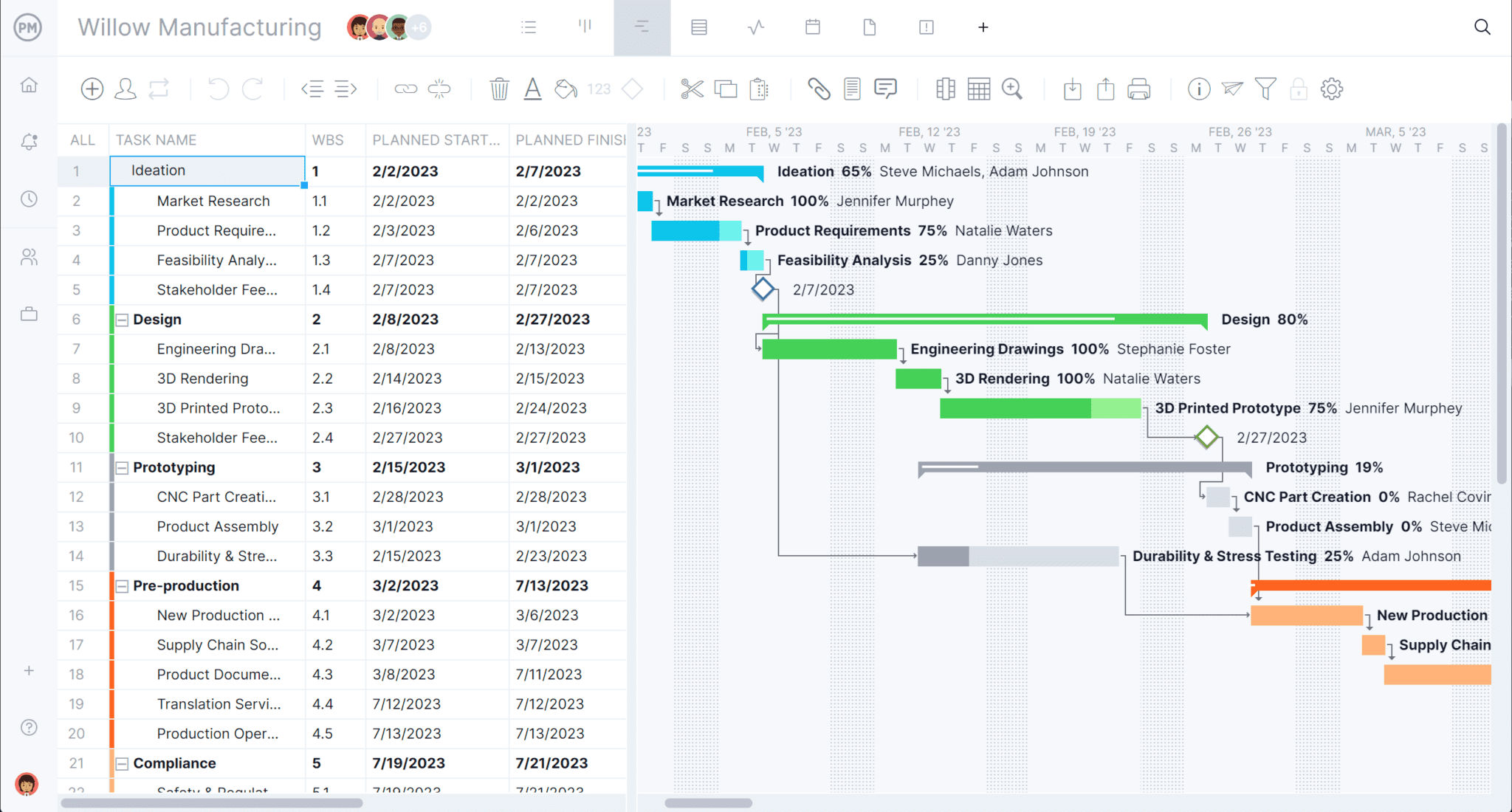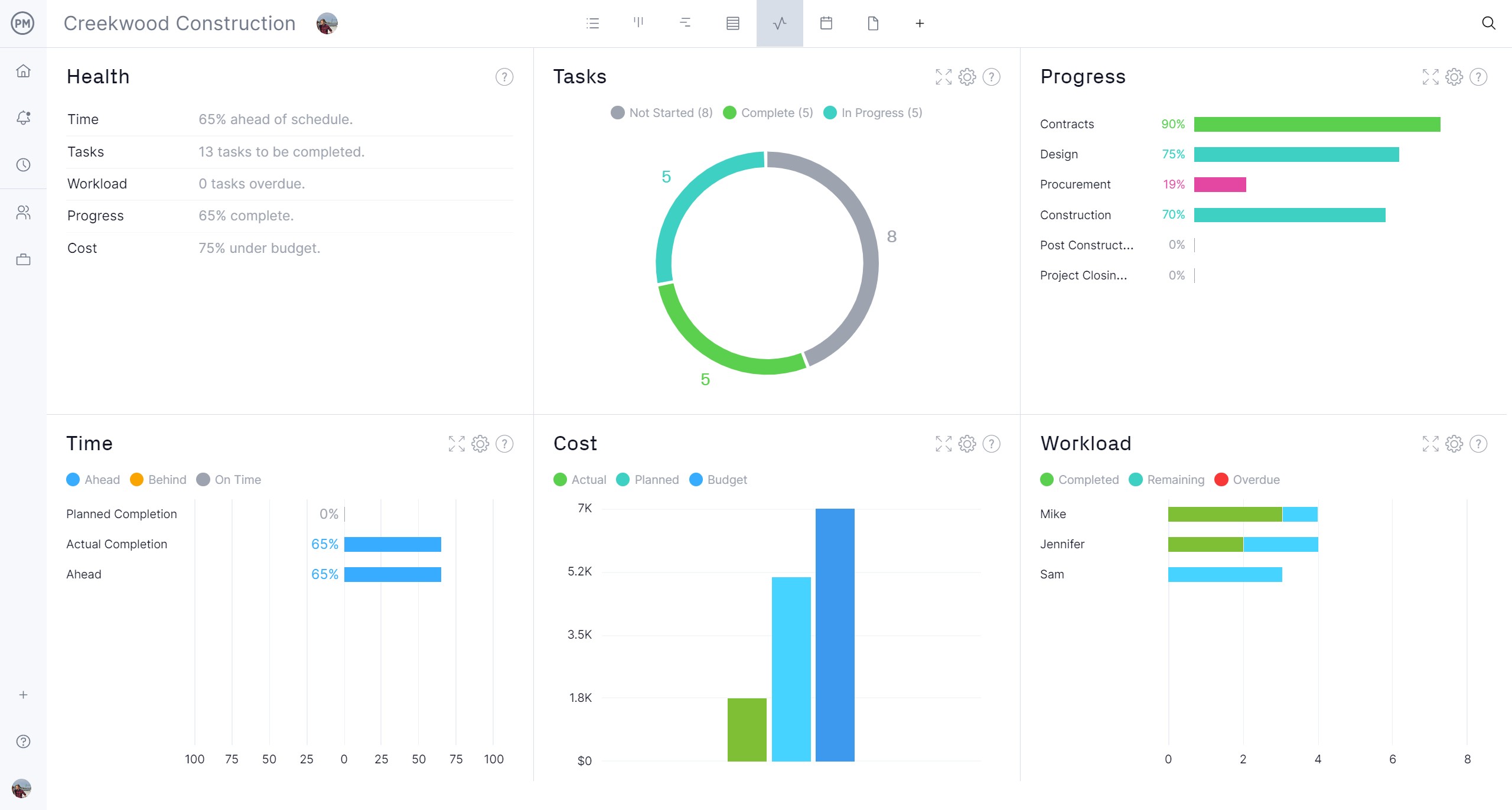The popularity of applications to help teams organize their tasks, resources and more has reached a point where every major software company has a list-making product. So it’s no surprise that there’s a Microsoft Lists, but is MS Lists the best list-making app on the market?
To find out, let’s define what Microsoft Lists is, look at its features and explore how to use MS Lists. We’ll also get into details about pricing and plans, pros and cons and how Microsoft Lists compares to other products by Microsoft.
What Is Microsoft Lists?
MS Lists grew out of SharePoint lists and facilitates tracking and organizing tasks. Project teams use it both personally and professionally. It seeks to present complex information in a clear and easily digestible format by displaying it in lists, grids and calendars.
Microsoft Lists claims to be a simple app to use, creating lists easily and quickly with templates. It promises the flexibility to keep everyone in sync with alerts. Some integrations connect Microsoft Lists to Microsoft Teams and other MS products. It’s included in the Microsoft 365 suite.
Microsoft List isn’t for everyone. It might serve personal use, but for managing a project it falls short. ProjectManager is award-winning project and portfolio management software that has a list view, but also Gantt charts for managers to schedule works, kanban boards for teams to manage workflow and calendar views for stakeholders to get an overview of the project. Even our list view is more robust, allowing for collaboration, assignments, due dates, tags, filters, attachments, subtasks, recurring tasks, automation and track work in real time. Get started with ProjectManager today for free.

Microsoft Lists Features
Microsoft Lists might not be the best application to organize and track work, but it has useful features. To give MS Lists the credits it’s due and a fighting chance against similar tools such as Microsoft Project, Planner or Teams, let’s take a close look at a few of the essential features that make MS Lists competitive in the marketplace.
MS Lists Grid View
Once project planning data has been added to Microsoft Lists, it can be viewed in different ways. The view can be changed from a traditional list view to a grid view so users can add or edit multiple items at once. The list view is usually chosen when searching specific requirements, while the grid view is for exploring.
MS Lists Calendar View
Another view is the Microsoft Lists calendar view. This helps users organize and manage their lists by displaying items in a project calendar view. This relatively new feature lets users view their tasks in a month, week, work week or day format, which helps visualize deadlines, events, milestones, etc.
Alerts & Notifications
When a user right-clicks on an item in their list, several options pop up, including to alert the user. The users can then define who the alert goes to, whether it is sent by email or text and when the user wants to be alerted. For example, if another user changes something on one of the task list items, the user working on that activity will get notified.
How to Use Microsoft Lists
Now that we understand what Microsoft Lists is and explored some of the features that make it a useful project tracking tool, let’s learn how to use it. Follow the three steps below to make a list, customize it and share it with others on the project team.
1. Create a New List
Users can get started from MS 365, MS Teams or SharePoint by clicking the app launcher and selecting MS Lists. Then select make a new list and start a new list from scratch, import an excel file or use an MS lists template. When selected, give the new list a name, a description, etc and save it. It’s now ready to use.
2. Customize List Columns
Click on the arrow next to the column that will be customized and select column settings. A list will appear offering formatting, such as moving the column left or right, hiding it or adding a column. Settings will be different according to the type of column that’s being customized.
3. Share List With Others
Microsoft Lists can be private or shared with the team. To do the latter, go to the MS Lists home page and hover the cursor over the list that will be shared. Select open actions and then select share. At this point, users are asked to choose who to share the list with. They can select the permissions and then grant access.
Plans and Pricing
There are a few plans and pricing tiers for Microsoft 365, the software that includes the MS List app. The plans are for home, business and enterprise. They’re listed below.
- Home: $99.99/year, for one to six people
- Microsoft 365 Business Basic: $6/user/month with annual auto renew subscription
- Microsoft 365 Business Standard: $12.50/user/month with annual auto-renew subscription
- Microsoft 365 Business Premium: $22/user/month with annual auto-renew subscription
- Microsoft 365 Apps for Business: $8.25/user/month with annual auto-renew subscription
- Microsoft 365 E3 (no Teams): $33.75 5/user/month with annual auto renew subscription
- Microsoft 365 E5 (no Teams): $54.75 5/user/month with annual auto renew subscription
- Microsoft 365 F3: $8 5/user/month with annual auto-renew subscription
Pros and Cons of Microsoft Lists
MS List is a simple database tool. As we detailed, it can help organize tasks, collaboration and other things, but it’s not a one-stop shop. It’s especially less than useful in managing projects. But that doesn’t mean it’s without merits. Let’s look at the advantages and disadvantages of using Microsoft Lists.
Pros of MS Lists
- Simple tool
- Views information in different contexts, such as calendar, standard, etc.
- Can share list with team
- Add images and files to list
- Track list activities
- Use templates and customized lists
- Create a list from Excel doc
Cons of MS Lists
- Limited views, no kanban board view, for example
- For all its simplicity, MS Lists still has a steep learning curve
- There’s no automation
- Lacks robust integrations
- No dashboard or reporting features
- No resource management tools
- No timesheets or other features for managing teams
How Does Microsoft Lists Compare to Other Microsoft Software?
MS Lists is part of a larger suite of Microsoft products. But is it a unique application? How does it compare to some similar software that Microsoft makes? Let’s look at how Microsoft Lists compares to three MS products: Microsoft Planner, SharePoint Lists and Microsoft Teams Lists.
Microsoft Lists vs. MS Planner
Both Microsoft Lists and Microsoft Planner are lightweight project management tools. MS Planner has more project management features to manage tasks, such as kanban boards, while MS Lists is more flexible and customizable. Neither tool is a real project management software with a full-service solution that includes resources, cost tracking, etc.
Microsoft Lists vs. SharePoint Lists
These two Microsoft software products are basically the same. Microsoft Lists displays lists from the SharePoint site and allows users to connect directly to the lists without having to browse to find them through the SharePoint site. MS Lists is easier to use than SharePoint, which was Microsoft’s answer to collaboration, though many users were unhappy with its functionality.
Microsoft Lists vs. Microsoft Teams Lists
Again, with MS Lists, users can create, manage, assign and track lists. Tasks in Microsoft Teams show the user all their tasks within Microsoft Teams. It centralizes all the tasks that are assigned to a user in the Microsoft Planner and one’s personal to-do list in one place.
ProjectManager Is the Best MS Lists Alternative
Why use Microsoft Lists for project management? It’s only going to frustrate managers and their teams. It’s a fine tool for simple list-making, but a project is not a glorified to-do list. Project management organizes tasks, workflows, resources and monitors progress and performance to ensure that projects stay on schedule and don’t go over budget.
ProjectManager is award-winning project management software that has a better list view than MS Lists, plus multiple project views and also manages resources, tracks labors costs and provides a high-level overview of the project with reporting tools for more insightful decision making.
Use Multiple Task, Project and Workflow Management Tools
Projects need more than a list to deliver success. Our software has multiple tools, such as Gantt charts that schedule tasks, link dependencies, filter for the critical path and set a baseline to track planned effort against actual effort in real time. Teams can use the list view or kanban boards to visualize their workflows, which can be customized and even automated, with task approval settings to ensure only quality deliverables move forward. There’s also a calendar view that gives stakeholders an overview of the project in broad strokes.

Manage Resources and Track Costs
Another thing users can’t do with Microsoft Lists is manage resources or track costs. When onboarding teams to ProjectManager, their availability can be set, such as PTO, vacation time and global holidays, which streamlines the assigning process.
Then go to the color-coded workload chart or visit the team page to get an overview of everyone’s allocation. From there, balance the team’s workload to keep them working at capacity. Costs, workload and more can be viewed either on the real-time dashboard or portfolio dashboard and reports. Labor costs can be monitored using secure timesheets that help with payroll, but also provide visibility into how far each team member has gone in completing their tasks.
 Related Microsoft Content
Related Microsoft Content
Microsoft has many products for planning, projects and more, but they’re far from a dominant force in project management. They’re popular, it’s true, but they might be resting on their laurels. Let’s look at some recent blog posts that review Microsoft products and whether they live up to the hype.
- Microsoft Planner: Pros, Cons and Alternatives
- Microsoft Project Online: Pros, Cons and Best Alternatives
- What Is Microsoft Teams? Uses, Plans, Features & Pricing
- What Is Microsoft Project? Uses, Features and Pricing
- Microsoft Project Viewer – View & Edit MPP Files Online
ProjectManager is online project and portfolio management software that connects teams whether they’re in the office, out in the field or anywhere else. They can share files, comment at the task level and stay updated with email and in-app notifications. Join teams at Avis, Nestle and Siemens who use our software to deliver successful projects. Get started with ProjectManager today for free.



